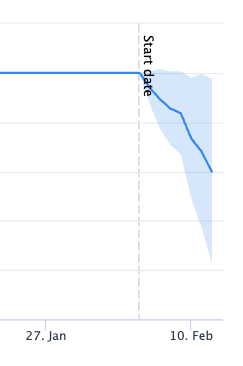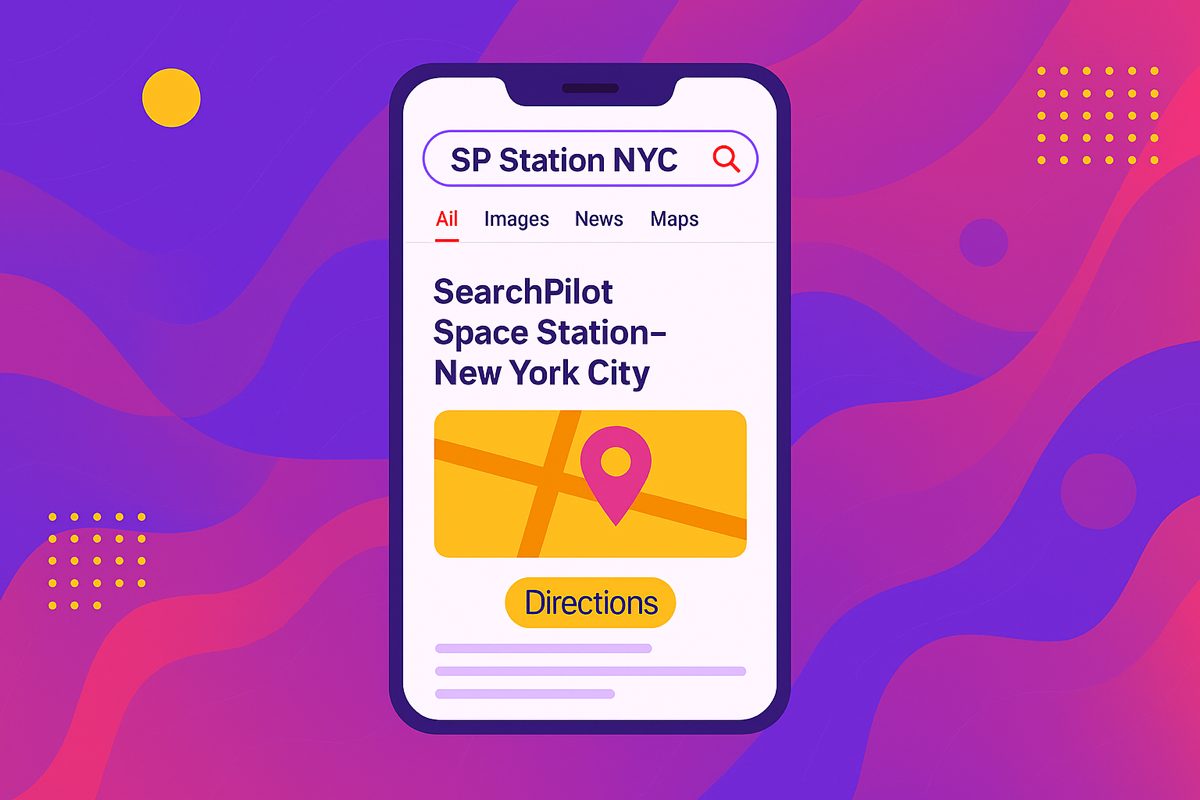Start here: how our SEO split tests work
If you aren't familiar with the fundamentals of how we run controlled SEO experiments that form the basis of all our case studies, then you might find it useful to start by reading the explanation at the end of this article before digesting the details of the case study below. If you'd like to get a new case study by email every two weeks, just enter your email address here.
For this week's #SPQuiz, we asked our followers on X/Twitter and LinkedIn what they thought happened when we removed a Google Map component on a customer's location pages that was showing both the address of that location and addresses of nearby locations. Would this stop Google from miscategorizing their location pages as listing pages, leading to increased organic traffic?
Poll Results

Our followers were evenly split between predicting an uplift in organic traffic and foreseeing no significant impact from removing this feature. It seems like removing this map feature should be an easy SEO win, but the results of this case study may surprise you!
The Case Study
Local SEO is the practice of optimizing a website to appear in search results, especially map results, when users are looking for products, services, or businesses near them. It's essential for businesses with physical locations or service areas, as it helps them connect with customers at the exact moment they're searching locally.
A key part of local SEO is making sure that Google understands the intent and structure of your location pages—specifically, that they are unique, informative destination pages about a single business location, not directories or listings of multiple businesses. This distinction is crucial because Google treats listing pages and individual location pages differently in search rankings, and confusing the two can undermine visibility in local search results.
A customer with location pages for their businesses noticed that Google appeared to be treating these pages as listing pages. In industries with physical locations offering services, local SEO is crucial. A misclassification like this can cause a site to miss out on opportunities to rank as users search for businesses near them.
These location pages contained an embedded Google Map component that showed pin drops not only for the relevant address, but nearby addresses as well. Our customer wanted to test whether removing the map component as a whole would help Google understand that these pages were pointing users to one specific address instead of listing multiple business locations.
What was changed
The customer removed the Google Map component from their location pages, which previously displayed multiple nearby business locations on each page.

Results

The change resulted in a statistically significant negative impact on organic traffic, with a predicted 7% decrease in sessions.
We believe this negative result occurred because the Google Map component was actually beneficial in helping the pages rank for a wider range of queries. Instead of confusing Google, the map may have served as a useful signal that these pages were relevant to local search queries.
This experiment illustrates the importance of testing even seemingly straightforward SEO ideas. Although the variant pages removed information that wasn’t directly relevant to the specific business address, the end result was less context to help Google understand the importance of having these pages rank for local search terms.
To receive more insights from our testing, sign up for our case study mailing list, and please feel free to get in touch if you want to learn more about this test or our split testing platform more generally.
How our SEO split tests work
The most important thing to know is that our case studies are based on controlled experiments with control and variant pages:
- By detecting changes in performance of the variant pages compared to the control, we know that the measured effect was not caused by seasonality, sitewide changes, Google algorithm updates, competitor changes, or any other external impact.
- The statistical analysis compares the actual outcome to a forecast, and comes with a confidence interval so we know how certain we are the effect is real.
- We measure the impact on organic traffic in order to capture changes to rankings and/or changes to clickthrough rate (more here).
Read more about how SEO testing works or get a demo of the SearchPilot platform.



